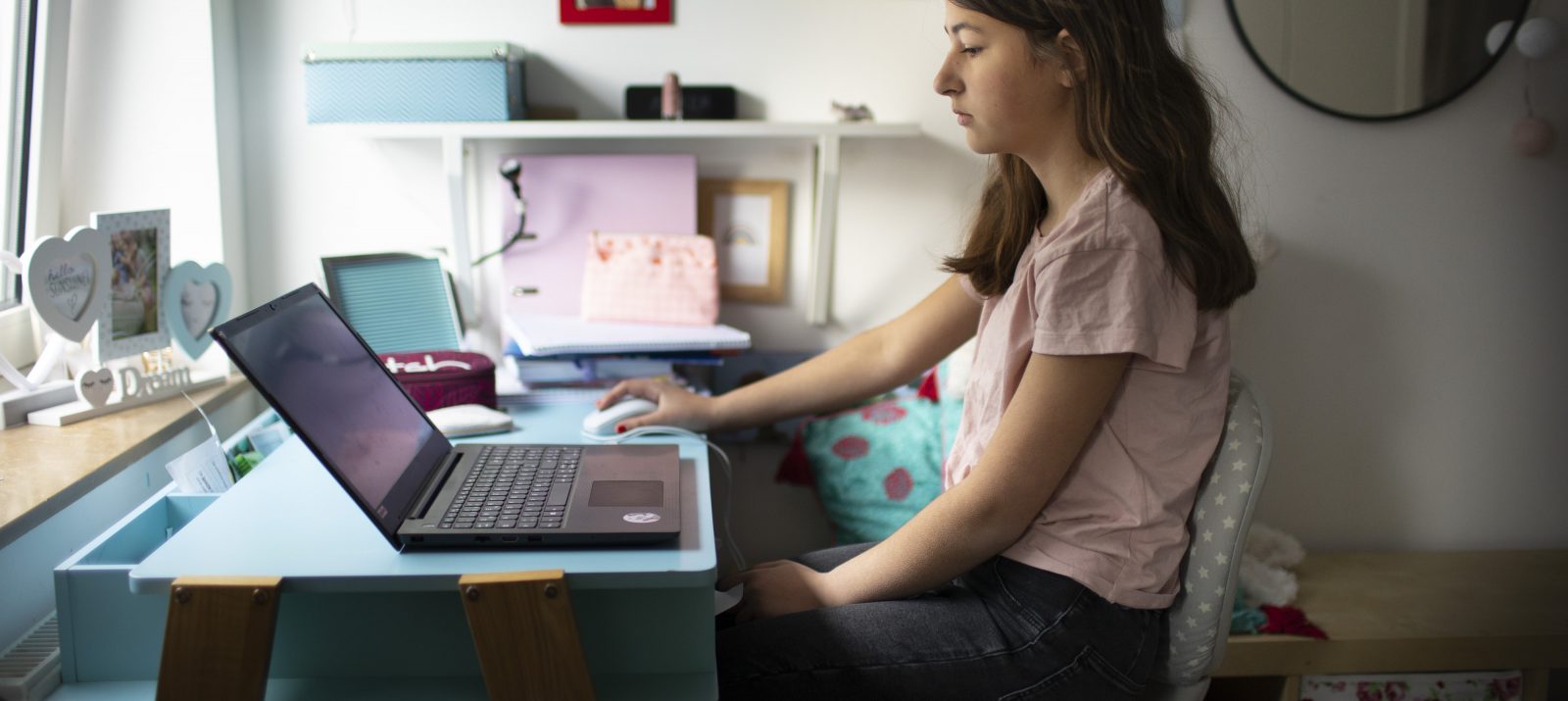
E-mails are commonplace for adults and many children and young people already use them regularly. A personal e-mail address is often required to log in to game sites and learning platforms, for example. Especially during the coronavirus lockdown, schools have increasingly sent information and tasks by email. We have a few tips for safe e-mailing for your child.
Most e-mail providers are not specifically aimed at children and young people. Their inboxes are often equipped with many functions that are difficult for younger users to understand. There are also dangers such as spam, phishing and chain letters that children and young people need to be familiarized with.
Spam refers to unsolicited e-mails that contain advertising. They are sent by people or algorithms automatically and without prompting. The same applies to phishing emails that aim to defraud the recipient, for example through fake competitions or false invoices. Some of these emails also contain malicious links or files that can infect your computer.
Some of the unsolicited e-mails also contain content that is not suitable for children, such as pornography. This may be due to the fact that the e-mail address was used for chats or games when registering. Such services protect the personal data of their users to varying degrees, allowing strangers to contact children without their consent. This can be particularly overwhelming for children and young people who may not yet have developed strategies to deal with such risks.
Before you set up an e-mail address for your child, you should think together about what it will be used for. Children under the age of 13 are not yet allowed to use many services (according to the General Terms and Conditions and Data Protection Act). Many schools offer their own e-mail addresses for school purposes, which must meet certain security standards. Explain to your child that such an address may only be used for school purposes. Among other things, such e-mail addresses (e.g. lena.meier@schule-am-hasengraben.de) can reveal specific information about your child. This can be risky if the address falls into the wrong hands.
Even with “private” email addresses, for example for social media, it is important that your child uses an imaginary name and that the email address cannot be traced back to them. Make it clear to your child that the e-mail address should not be passed on carelessly. It is best to use a secure e-mail provider.
Also explain to your child what spam is and how to deal with it. In many programs, spam messages can be marked so that they are automatically sorted out. If the sender of an e-mail is unknown, you and your child should be careful. It is best to delete such messages immediately and do not click on links or file attachments.
If your child is old enough to log on to social media or other services, do it together. Make sure that the e-mail address is not displayed publicly. Switch off information e-mails from the provider. Otherwise, the mailbox can quickly become overcrowded and it will be difficult for your child to distinguish between spam and important messages.
Especially for younger children it is recommended to use a suitable e-mail program. Mail providers especially for children have only the most important functions and guarantee certain protective measures:
The child-friendly programs all have spam and virus protection. This will prevent your child from receiving unwanted advertising or chain letters in the first place. However, ZUM ‘s internal search is linked to Google, which is why adult search results may also appear.
Some of the programs are free of charge(Mail4Kidz for the first six months) and are particularly suitable for children under the age of 15. Kidsmail24 users have the option of switching to an unrestricted account once they reach the age of 14. Despite child-friendly programs, your child is never protected from all risks on the net. As a parent, you should therefore talk to your child regularly about their contacts on the Internet and give your child the security of knowing that they can turn to you if they have any problems.